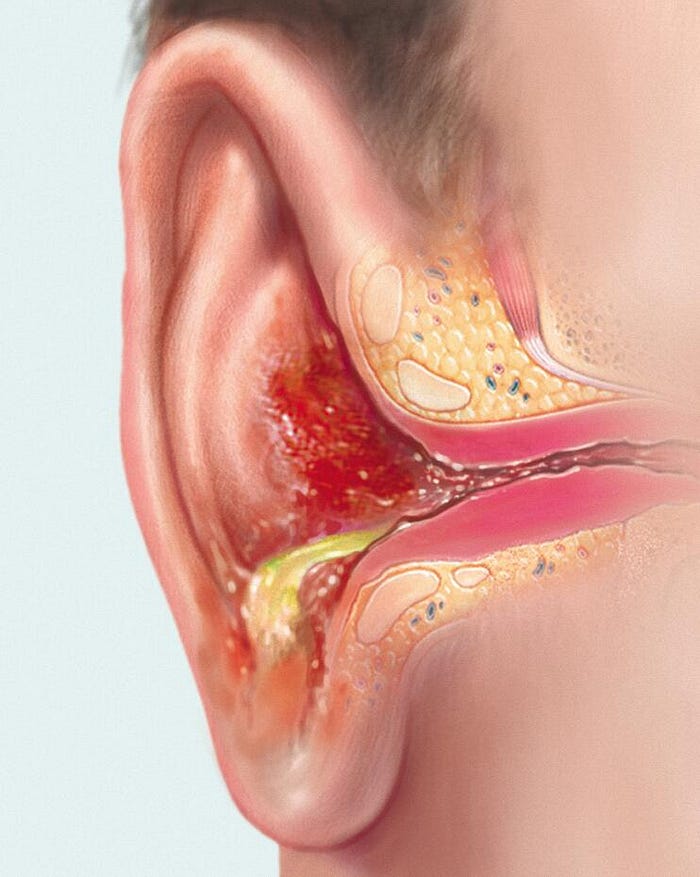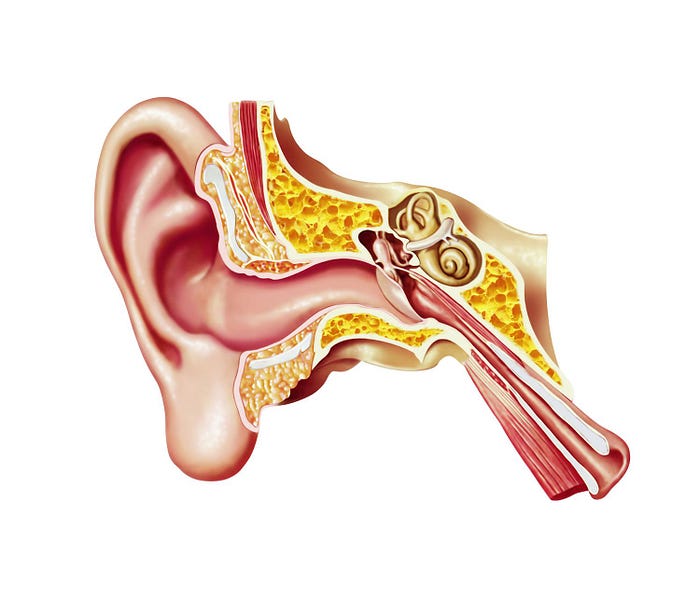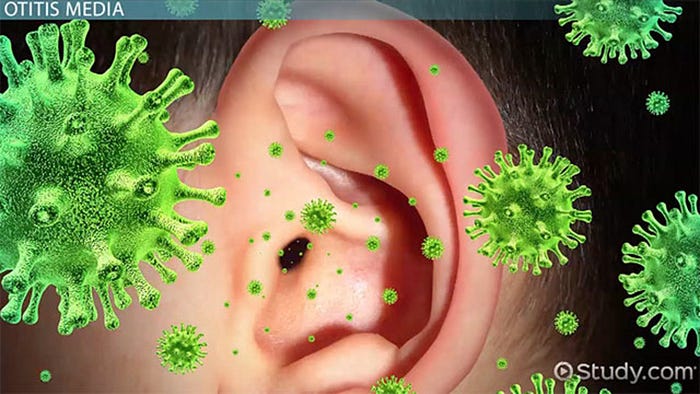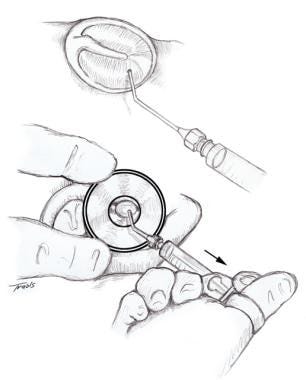- “Empowering Emergency Medicine Physicians”
- “Queue Management Software and Hospitalists in Modern Healthcare”
- “Enhancing-Pediatric-Infectious-Disease-Care”
- “Revolutionizing-Geriatric-Care”
- “Optimizing-Patient-Care-in-Pediatric-Rheumatology”
- “Pediatric-Pulmonology-Care”
- “Revolutionizing-Pediatric-Gastroenterology”
- “Enhancing-Pediatric-Neurology-Care”
- “Optimizing-Pediatric-Cardiology”
- “Enhancing-Pediatric-Endocrinology-Care”
- “Empowering-Neonatologists-with-EMR-Software”
- “Pediatrics-in-Focus”
- “Empowering-Neurologists-with-Electronic-Prescriptions”
- “Streamlining-Dermatology-Practice”
- “Streamlining-Psychiatry-Practice”
- “A-Game-Changer-for-Infectious-Disease-Specialists”
- “Allergist/Immunologist-Practices-with-QME-EMR-and-Hospital-Management-Systems”
- “Empowering-Hematologists-and-Revolutionizing-Healthcare-Management”
- “Optimizing-Healthcare-with-HMIS”
- “Transforming-Healthcare-with-Endocrinologist”
- “Healthcare-Management-with-QMe-EMR-for-Nephrologists”
- “Revolutionizing-Healthcare-Management-with-Cardiologist”
- “Streamlining-Operations-with-Queue-Management-Software”
- “Optimizing-Healthcare-Delivery”
- “Transforming-Healthcare-Management”
- HMIS And Decision Support Systems
- Dengue Unveiled: An Overview of Causes, Symptoms, and Prevention.
- Dengue Fever: Unraveling the Mosquito-Borne Menace.
- HMIS-and-Continuity-of-Care
- Project-Management-for-Successful-HMIS
- Catalysts of Wellness: The Transformative Power of Diagnosis and Screening in Healthcare
- Patient-Data-Management
- Guardians of Healthcare: The Vital Role of Fraud Detection in Ensuring Ethical Care
- Unlocking Insights
- Healthcare in the Digital Age: The History Of Development Of HMIS
- Transforming Healthcare
- Safeguarding-HMIS-Data
- HMIS-Integration-Challenges
- ANXIETY UNVEILED: CONQUERING FEARS AND CULTIVATING CALM.
- BEYOND THE BLUE: EMBRACING LIGHT ON THE PATH OF DEPRESSION.
- BEYOND THE BLUE: EMBRACING LIGHT ON THE PATH OF DEPRESSION.
- HMIS and Resource Allocation
- HMIS Data Accuracy and Integrity
- SOOTHING THE SILENT PAIN: UNDERSTANDING VULVODYNIA.
- Impact of HMIS on OPD Operations
- In Patient Management Through Health Management
- WITHIN THE SHADOWS: UNDERSTANDING BRAIN TUMOURS FROM WITHIN
- HMIS-and-Health-Insurance-Integration
- HMIS-Data-Analytics-for-Preventive-Care
- SILENT INTRUDERS: UNRAVELLING THE MYSTERIES OF PELVIC INFLAMMATORY DISEASE
- BREAKING FREE: OVERCOMING THE HURDLE OF URINARY INCONTINENCE
- “HMIS and Doctor-Patient Communication”
- HEALING INSIGHTS: THE POWER OF THE HOSPITAL MANAGEMENT INFORMATION SYSTEM.
- SOLVING THE OVARIAN PUZZLE:UNDERSTANDING OVARIAN CYST INSIDE OUT
- Usability And User Experience In HMIS
- WARRIOR’S BATTLE: TRIUMPHING OVER UTERINE CANCER
- POLYCYSTIC OVARY PUZZLE: UNRAVELLING THE ENIGMA OF PCOS
- Unlocking-the-Potential-of-HMIS-Data-for Medical-Research-and-Healthcare-Policy-Enhancement
- Feminine Health Unplugged: Empowering Women in Vaginal Infection Awareness
- Revitalizing Feminine Comfort: A Journey Through Vaginal Wellness.
- HMIS Vendor Selection Guide
- UNDERSTANDING FIBROIDS: NAVIGATING THE INTRICACIES OF UTERINE HEALTH.
- Best Practices for Data Migration in Healthcare Management Information Systems (HMIS)
- CONCEIVING HOPE: NAVIGATING THE JOURNEY OF INFERTILITY
- MENSTRUAL IRREGULARITIES: CAUSES AND TREATMENT
- RISING ABOVE: EMPOWERING WOMEN WITH PELVIC ORGAN PROLAPSE
- Leveraging HMIS for Enhanced Public Health Management and Disease Surveillance
- Challenges and Benefits of Implementing HMIS in Rural and Remote Healthcare Settings
- Securing Healthcare Continuity
- Pancreatic Cancer
- Lymphoma
- Leukemia
- Bladder Cancer
- Skin Cancer (Melanoma)
- COLORECTAL CANCER
- All about Prostate Cancer
- Fighting out the Disease of Lung Cancer
- Advances in Breast Cancer Treatment: A Comprehensive Guide
- Autism Spectrum Disorder (ASD)
- EHR SYMPHONY: HARMONIZING HEALTHCARE THROUGH ELECTRONIC RECORDS .
- Understanding Testicular Cancer: Detection, Treatment And Awareness.
- Childhood Obesity
- Kawasaki Disease
- Eczema (Atopic Dermatitis)
- Understanding Bone Cancer: A Brief Overview.
- Virtual Healing: Navigating Healthcare Through Telemedicine and Telehealth.
- Attention-Deficit/Hyperactivity Disorder (ADHD)
- PELVIC PAIN:CAUSES SYMPTOMS AND PREVENTIONS
- Type 1 Diabetes: Causes, Symptoms, and Treatment
- Gastroesophageal Reflux Disease (GERD)
- Battling Pneumonia: Unveiling the Stealthy Invader of the Lungs
- Unravelling the Complexity of Allergic Reactions: Understanding, Managing, and Thriving
- Rashes (Eczema, Dermatitis)
- UNDERSTANDING CERVICAL DYSPLASIA: CAUSES, SYMPTOMS AND MANAGEMENT
- Chicken Pox
- Endometriosis Unmasked: A Closer Look at the Silent Struggle
- Croup
- Hand, Foot and Mouth Disease (HFMD)
- THE DAWNING OF A NEW ERA: EMBRACING THE JOURNEY OF MENOPAUSE
- Urinary Tract Infections (UTIs)
- Strep Throat (Streptococcal Pharyngitis)
- 28th July In medical history!!
- Influenza (Flu) - Symptoms, Prevention and Management
- 27th July In medical history!!
- Respiratory Syncytial Virus (RSV) Infection
- SIGNIFICANCE AND ADVANTAGES OF HMIS: A DETAILED ANALYSIS
- Beyond Boundaries: Transforming Healthcare with Virtual Reality
- TRACK YOUR LIFE : A DETAILED UNDERSTANDING ON HEALTH MONITORING SYSTEM
- EXPLORING BENEATH THE SURFACE: UNDERSTANDING BARTHOLIN CYSTS AND ABSCESSES
- GUARDING GUT HEALTH: YOUR GUIDE TO POTENTIAL CROHN’S DISEASE PREVENTION.
- PATHWAYS OF HOPE: NAVIGATING THE CHALLENGES OF ESOPHAGEAL CANCER
- Gastric Battles: Confronting Stomach Cancer Head-On.
- HMIS IN SMALL CLINICS: A STEP TO A BETTER FUTURE
- Harmonizing Your Cycle: A Journey to Menstrual Health and Balance.
- Respiratory Syncytial Virus (RSV) Infection
- GUARDING OUR INTIMATE WORLD: A CLOSER LOOK AT STI
- Real-World HMIS Implementation Case Studies: Using Data to Transform Healthcare
- Gastroenteritis (Stomach Flu)
- Asthama - The Anatomy Of Breathing
- Influenza - A Silent Intruder
- Breast Cancer
Understanding Otitis Media(Ear Infection)
Understanding Otitis Media(Ear Infection)

Definition of Otitis Media
A medical ailment known as otitis media is defined by an infection or inflammation of the middle ear, which is the area beyond the eardrum. The spread of upper respiratory tract infections or obstruction of the Eustachian tube, which connects the middle ear to the back of the nose, are two common causes of this inflammation. Ear pain, middle ear fluid buildup, hearing loss, and occasionally fever are typical symptoms. Otitis media is a common illness, particularly in kids, and early detection and appropriate healthcare treatment are essential to avoid serious side effects including hearing loss or recurrent infections.
Prevalence and significance of the condition
Otitis media, though it can affect people of various ages, is a common health problem, especially in young children. Millions of cases are recorded annually, says the World Health Organization. The condition is significant because, if addressed, it may result in recurring infections, affect children’s speech and language development, and cause temporary or permanent hearing loss. To lessen the negative effects of Otitis Media and enhance overall ear health, prompt diagnosis, suitable treatment, and preventive actions are crucial.
Importance of early diagnosis and treatment
Otitis media should be diagnosed and treated as soon as possible, especially in youngsters, to avoid complications and lessen the effect on speech and hearing development. Early hospital treatment can minimize symptoms, lower the likelihood of recurring infections, and improve general ear health, all of which improve the affected person’s quality of life.
Anatomy of Ear

A synopsis of the ear’s anatomy
The outer ear, middle ear, and inner ear are the three major components of the ear. The pinna (visible portion) and ear canal make up the outer ear. The eardrum and three tiny bones (ossicles) that carry sound vibrations are located in the middle ear. The cochlea, which converts sound into electrical signals and sends them to the brain, is located in the inner ear. These structures function together.
The functions of the various ear components
Sound waves are directed toward the middle ear by the pinna and ear canal in the outer ear. The eardrum in the middle ear vibrates in reaction to sound, and the tiny bones in the ossicles receive these vibrations. The sound is amplified and sent to the inner ear by the ossicles. We can hear because the cochlea in the inner ear transforms sound vibrations into electrical signals that are then transmitted to the brain via the auditory nerve. The inner ear is also essential for balance and spatial orientation.
Otitis Media Types

Acute medial otitis (AOM)
• The most usual kind of AOM typically manifests as an abrupt onset of symptoms like fever, ear discomfort, and fluid buildup behind the eardrum.
AOM can affect people of all ages, although it is particularly common in young children. It is brought on by bacteria or viruses and frequently follows an upper respiratory tract infection.
COM (chronic otitis media):
• A chronic middle ear infection or inflammation known as COM can last for several weeks or even months.
• It can be brought on by persistent or untreated acute infections, and it can result in more serious problems include hearing loss and rupture of the tympanic membrane.
• COM is more prevalent in people who experience frequent episodes.
Pathophysiology

The Eustachian tube, which connects the middle ear to the back of the throat, is disrupted in the pathophysiology of otitis media. The ventilation and equalization of air pressure in the middle ear are interfered with when the Eustachian tube becomes obstructed or malfunctions to open and close normally. As a result, fluid, sometimes mucous or serous fluid, builds up in the middle ear space. The stagnant fluid offers the perfect habitat for viruses or bacteria to multiply, resulting in infection or inducing an inflammatory reaction. As a result, the middle ear inflames, resulting in increased pressure, edema, and redness. This procedure may result in symptoms like ear pain, hearing loss, and occasionally fever. Chronic disease may develop if the problem is not treated.
diagnosis
important elements of the diagnosis:
- Medical background: The medical professional will ask the patient about any symptoms they may be experiencing, such as ear pain, hearing loss, fever, and any recent upper respiratory infections. They will also inquire about the frequency and length of the symptoms.
2. Physical Examination: The ear canal and eardrum are inspected with an otoscope, a portable device with a light and magnifying lens. This enables the medical professional to look for indications of middle ear infection, fluid buildup, or inflammation.
- Additional tests: Tympanometry, which measures the eardrum’s movement in reaction to changes in air pressure and aids in determining the fluid content and function of the middle ear.
• Audiometry: A hearing test that assesses the patient’s capacity to hear sounds of various frequencies and loudness and, if necessary, establishes the severity of any hearing loss.
• Culture and Sensitivity: If it is thought that the infection is bacterial, an ear fluid sample may be taken for culture in order to identify the particular bacteria that are causing the illness and to choose the best antibiotic to use.
- Differential diagnosis: The physician will rule out any disorders that present with same symptoms, such as earwax accumulation, foreign bodies in the ear, or additional ear infections.
Complicacies
Otitis Media that is left untreated or improperly managed can result in a number of problems, underscoring the significance of prompt diagnosis and appropriate care. The most frequent and serious effect is hearing loss, especially in youngsters, as the middle ear’s fragile components can be damaged by chronic fluid buildup and inflammatory changes, which can impair speech and sound conduction. A cholesteatoma, an abnormal skin growth in the middle ear, can develop as a result of chronic otitis media and have the potential to erode nearby bones, impair balance, or even result in facial nerve paralysis. Recurrent infections can also lead to a ruptured eardrum, which makes the ear vulnerable to more infections and necessitates surgical correction. The spread of infection to surrounding structures, such as the mastoid bone (mastoiditis), is a rare but serious consequence.
Treatment

The kind and severity of the ailment affect how Otitis Media is treated. Acute instances frequently get better on their own, but doctors may prescribe medication for symptom control and pain relief. Bacterial infections are often treated with antibiotics. Further examination by an ENT expert may be required in situations of chronic or recurring Otitis Media. To improve middle ear ventilation and lessen fluid accumulation, doctors may advise surgical procedures such tympanostomy tube insertion or myringotomy (a procedure that involves cutting a tiny incision in the eardrum to drain fluid). The problem must be managed using prevention techniques including immunizations and regular ear cleanliness.
Moreover, QMe Healthcare System Software efficient communication tools enable seamless collaboration between healthcare providers, ensuring timely referrals to specialists when needed. By enhancing communication and data management, QMe Healthcare System Software empowers healthcare professionals to deliver more efficient and effective treatment for patients with Otitis Media, ultimately leading to improved patient outcomes and satisfaction.
Prevention
A number of methods are used to lower the risk of infection and preserve good ear health in the prevention of otitis media. Pneumococcal and influenza vaccines in particular help prevent infections that might cause otitis media. Reduce the risk of transmission by washing your hands frequently and avoiding close contact with those who have respiratory infections. If at all possible, breastfeeding has been demonstrated to offer some defense against ear infections. Additionally, reducing exposure to environmental toxins and tobacco smoke will lessen the possibility of Eustachian tube dysfunction and the ensuing middle ear infections. Quickly treating allergies and respiratory infections can also help prevent otitis media and its possible side effects.
Management of Recurrent Otitis Media
A combination of conservative actions and medicinal therapies are used to treat otitis media. Pain treatment, the application of warm compresses, and observation for spontaneous remission are all aspects of conservative care. The use of analgesics to treat pain and the prescription of antibiotics to treat bacterial infections are examples of medical interventions. ENT doctors may advise surgical procedures like myringotomy or tympanostomy tube insertion in more severe or recurrent situations.
Qme Healthcare System Software plays a vital role in managing Otitis Media cases by streamlining patient data, facilitating quick diagnosis, and enabling efficient communication between healthcare providers, leading to more effective and coordinated treatment plans.
In conclusion, otitis media is a serious and frequent condition that needs to be treated very away. To avoid problems, such as hearing loss and recurring infections, especially in youngsters, prompt diagnosis and healthcare treatment are essential. Preventative measures such as immunizations, excellent hygiene, and avoiding environmental contaminants are essential.
Additionally, the Qme Healthcare System Software significantly enhances the management of Otitis Media cases, streamlining data collection, facilitating fast and accurate diagnosis, and enabling seamless communication between healthcare professionals
- “Empowering Emergency Medicine Physicians”
- “Queue Management Software and Hospitalists in Modern Healthcare”
- “Enhancing-Pediatric-Infectious-Disease-Care”
- “Revolutionizing-Geriatric-Care”
- “Optimizing-Patient-Care-in-Pediatric-Rheumatology”
- “Pediatric-Pulmonology-Care”
- “Revolutionizing-Pediatric-Gastroenterology”
- “Enhancing-Pediatric-Neurology-Care”
- “Optimizing-Pediatric-Cardiology”
- “Enhancing-Pediatric-Endocrinology-Care”
- “Empowering-Neonatologists-with-EMR-Software”
- “Pediatrics-in-Focus”
- “Empowering-Neurologists-with-Electronic-Prescriptions”
- “Streamlining-Dermatology-Practice”
- “Streamlining-Psychiatry-Practice”
- “A-Game-Changer-for-Infectious-Disease-Specialists”
- “Allergist/Immunologist-Practices-with-QME-EMR-and-Hospital-Management-Systems”
- “Empowering-Hematologists-and-Revolutionizing-Healthcare-Management”
- “Optimizing-Healthcare-with-HMIS”
- “Transforming-Healthcare-with-Endocrinologist”
- “Healthcare-Management-with-QMe-EMR-for-Nephrologists”
- “Revolutionizing-Healthcare-Management-with-Cardiologist”
- “Streamlining-Operations-with-Queue-Management-Software”
- “Optimizing-Healthcare-Delivery”
- “Transforming-Healthcare-Management”
- HMIS And Decision Support Systems
- Dengue Unveiled: An Overview of Causes, Symptoms, and Prevention.
- Dengue Fever: Unraveling the Mosquito-Borne Menace.
- HMIS-and-Continuity-of-Care
- Project-Management-for-Successful-HMIS
- Catalysts of Wellness: The Transformative Power of Diagnosis and Screening in Healthcare
- Patient-Data-Management
- Guardians of Healthcare: The Vital Role of Fraud Detection in Ensuring Ethical Care
- Unlocking Insights
- Healthcare in the Digital Age: The History Of Development Of HMIS
- Transforming Healthcare
- Safeguarding-HMIS-Data
- HMIS-Integration-Challenges
- ANXIETY UNVEILED: CONQUERING FEARS AND CULTIVATING CALM.
- BEYOND THE BLUE: EMBRACING LIGHT ON THE PATH OF DEPRESSION.
- BEYOND THE BLUE: EMBRACING LIGHT ON THE PATH OF DEPRESSION.
- HMIS and Resource Allocation
- HMIS Data Accuracy and Integrity
- SOOTHING THE SILENT PAIN: UNDERSTANDING VULVODYNIA.
- Impact of HMIS on OPD Operations
- In Patient Management Through Health Management
- WITHIN THE SHADOWS: UNDERSTANDING BRAIN TUMOURS FROM WITHIN
- HMIS-and-Health-Insurance-Integration
- HMIS-Data-Analytics-for-Preventive-Care
- SILENT INTRUDERS: UNRAVELLING THE MYSTERIES OF PELVIC INFLAMMATORY DISEASE
- BREAKING FREE: OVERCOMING THE HURDLE OF URINARY INCONTINENCE
- “HMIS and Doctor-Patient Communication”
- HEALING INSIGHTS: THE POWER OF THE HOSPITAL MANAGEMENT INFORMATION SYSTEM.
- SOLVING THE OVARIAN PUZZLE:UNDERSTANDING OVARIAN CYST INSIDE OUT
- Usability And User Experience In HMIS
- WARRIOR’S BATTLE: TRIUMPHING OVER UTERINE CANCER
- POLYCYSTIC OVARY PUZZLE: UNRAVELLING THE ENIGMA OF PCOS
- Unlocking-the-Potential-of-HMIS-Data-for Medical-Research-and-Healthcare-Policy-Enhancement
- Feminine Health Unplugged: Empowering Women in Vaginal Infection Awareness
- Revitalizing Feminine Comfort: A Journey Through Vaginal Wellness.
- HMIS Vendor Selection Guide
- UNDERSTANDING FIBROIDS: NAVIGATING THE INTRICACIES OF UTERINE HEALTH.
- Best Practices for Data Migration in Healthcare Management Information Systems (HMIS)
- CONCEIVING HOPE: NAVIGATING THE JOURNEY OF INFERTILITY
- MENSTRUAL IRREGULARITIES: CAUSES AND TREATMENT
- RISING ABOVE: EMPOWERING WOMEN WITH PELVIC ORGAN PROLAPSE
- Leveraging HMIS for Enhanced Public Health Management and Disease Surveillance
- Challenges and Benefits of Implementing HMIS in Rural and Remote Healthcare Settings
- Securing Healthcare Continuity
- Pancreatic Cancer
- Lymphoma
- Leukemia
- Bladder Cancer
- Skin Cancer (Melanoma)
- COLORECTAL CANCER
- All about Prostate Cancer
- Fighting out the Disease of Lung Cancer
- Advances in Breast Cancer Treatment: A Comprehensive Guide
- Autism Spectrum Disorder (ASD)
- EHR SYMPHONY: HARMONIZING HEALTHCARE THROUGH ELECTRONIC RECORDS .
- Understanding Testicular Cancer: Detection, Treatment And Awareness.
- Childhood Obesity
- Kawasaki Disease
- Eczema (Atopic Dermatitis)
- Understanding Bone Cancer: A Brief Overview.
- Virtual Healing: Navigating Healthcare Through Telemedicine and Telehealth.
- Attention-Deficit/Hyperactivity Disorder (ADHD)
- PELVIC PAIN:CAUSES SYMPTOMS AND PREVENTIONS
- Type 1 Diabetes: Causes, Symptoms, and Treatment
- Gastroesophageal Reflux Disease (GERD)
- Battling Pneumonia: Unveiling the Stealthy Invader of the Lungs
- Unravelling the Complexity of Allergic Reactions: Understanding, Managing, and Thriving
- Rashes (Eczema, Dermatitis)
- UNDERSTANDING CERVICAL DYSPLASIA: CAUSES, SYMPTOMS AND MANAGEMENT
- Chicken Pox
- Endometriosis Unmasked: A Closer Look at the Silent Struggle
- Croup
- Hand, Foot and Mouth Disease (HFMD)
- THE DAWNING OF A NEW ERA: EMBRACING THE JOURNEY OF MENOPAUSE
- Urinary Tract Infections (UTIs)
- Strep Throat (Streptococcal Pharyngitis)
- 28th July In medical history!!
- Influenza (Flu) - Symptoms, Prevention and Management
- 27th July In medical history!!
- Respiratory Syncytial Virus (RSV) Infection
- SIGNIFICANCE AND ADVANTAGES OF HMIS: A DETAILED ANALYSIS
- Beyond Boundaries: Transforming Healthcare with Virtual Reality
- TRACK YOUR LIFE : A DETAILED UNDERSTANDING ON HEALTH MONITORING SYSTEM
- EXPLORING BENEATH THE SURFACE: UNDERSTANDING BARTHOLIN CYSTS AND ABSCESSES
- GUARDING GUT HEALTH: YOUR GUIDE TO POTENTIAL CROHN’S DISEASE PREVENTION.
- PATHWAYS OF HOPE: NAVIGATING THE CHALLENGES OF ESOPHAGEAL CANCER
- Gastric Battles: Confronting Stomach Cancer Head-On.
- HMIS IN SMALL CLINICS: A STEP TO A BETTER FUTURE
- Harmonizing Your Cycle: A Journey to Menstrual Health and Balance.
- Respiratory Syncytial Virus (RSV) Infection
- GUARDING OUR INTIMATE WORLD: A CLOSER LOOK AT STI
- Real-World HMIS Implementation Case Studies: Using Data to Transform Healthcare
- Gastroenteritis (Stomach Flu)
- Asthama - The Anatomy Of Breathing
- Influenza - A Silent Intruder
- Breast Cancer